It's well established that BMW M3s are some of the best handling cars on the planet. So, if you’re going to race in NASA’s ST4, you can’t beat an E36 M3 with a S54 engine swap.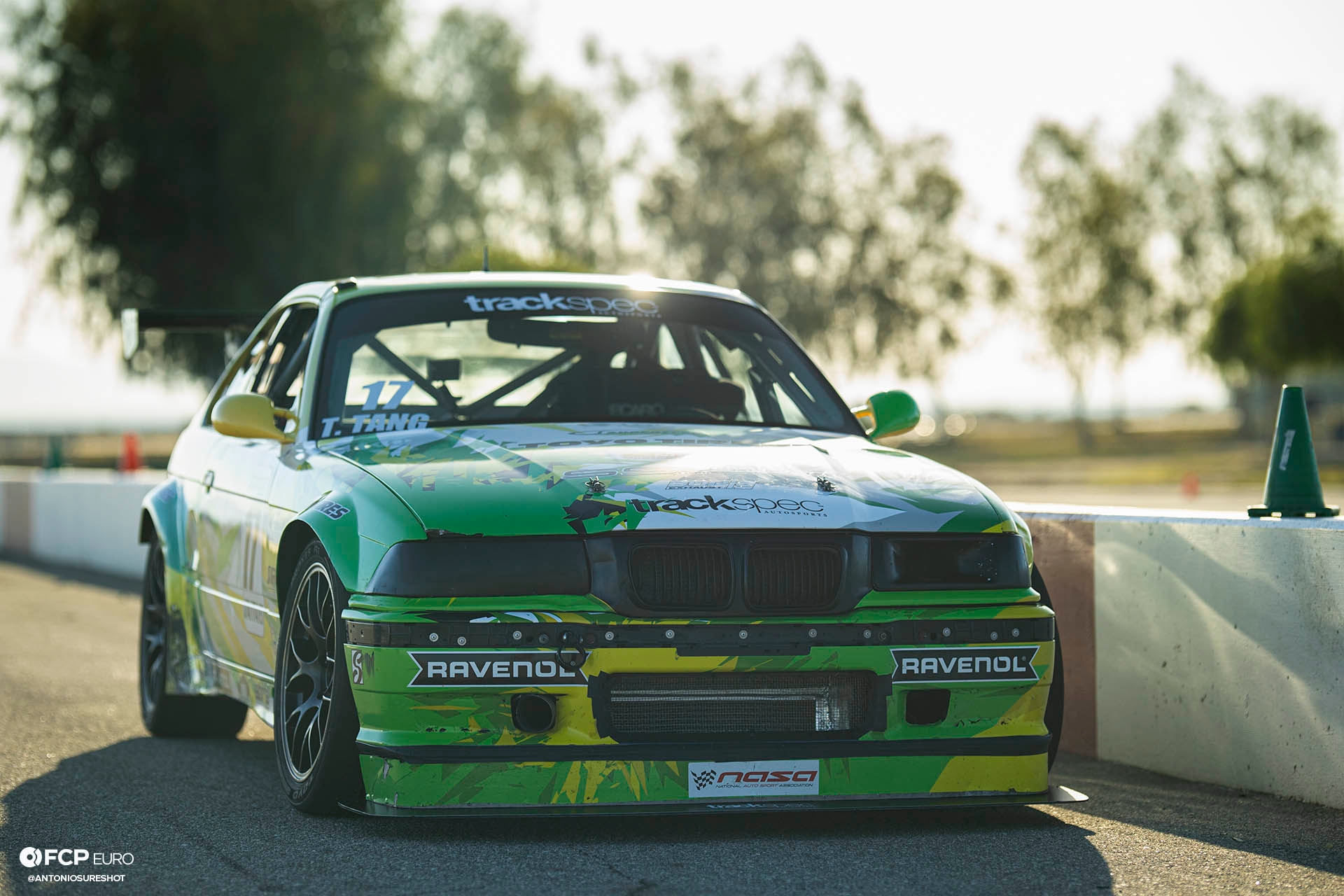
Tom Tang is no stranger to taking great handling cars and adding more power to them. Just before building this car, he owned a Honda S2000 that featured a V6 swap that he raced in the National Auto Sport Association (NASA) Super Touring ST4 Class. That’s the hidden beauty of Super Touring – it’s all about power to weight ratio, tire width and some slight restrictions on aerodynamic changes rather than stifling rules. For ST4, the ratio is limited to 12:1 and creates a rather interesting field. “For the past 2 years,” says Tom when he talks about the series, “I have competed in the NASA Super Touring championship series in ST4 class. ST4 is great because there is a lot of variety in terms of cars. On any given weekend you’ll see a regional field of 16 ST4 cars composed of BMWs, Hondas, Nissans, and even Porsches.”
Unfortunately for Tom, he took turn eight of Sonoma raceway wrong and rolled the S2000. There was enough damage it had to be retired. What do you go to after building a V6 Honda S2000? “Since my crash was at the end of last season,” he explained, “I had a little bit of time to think things over. Did I want to continue racing? Hell yes. Did I want to build a new car? Maybe. After mulling it over, I decided it would be faster and cheaper to buy a proven race car instead of starting from scratch.” He would purchase this E36 M3 that was built by TC Design, a shop that’s well known and the car driven by an ST4 champion.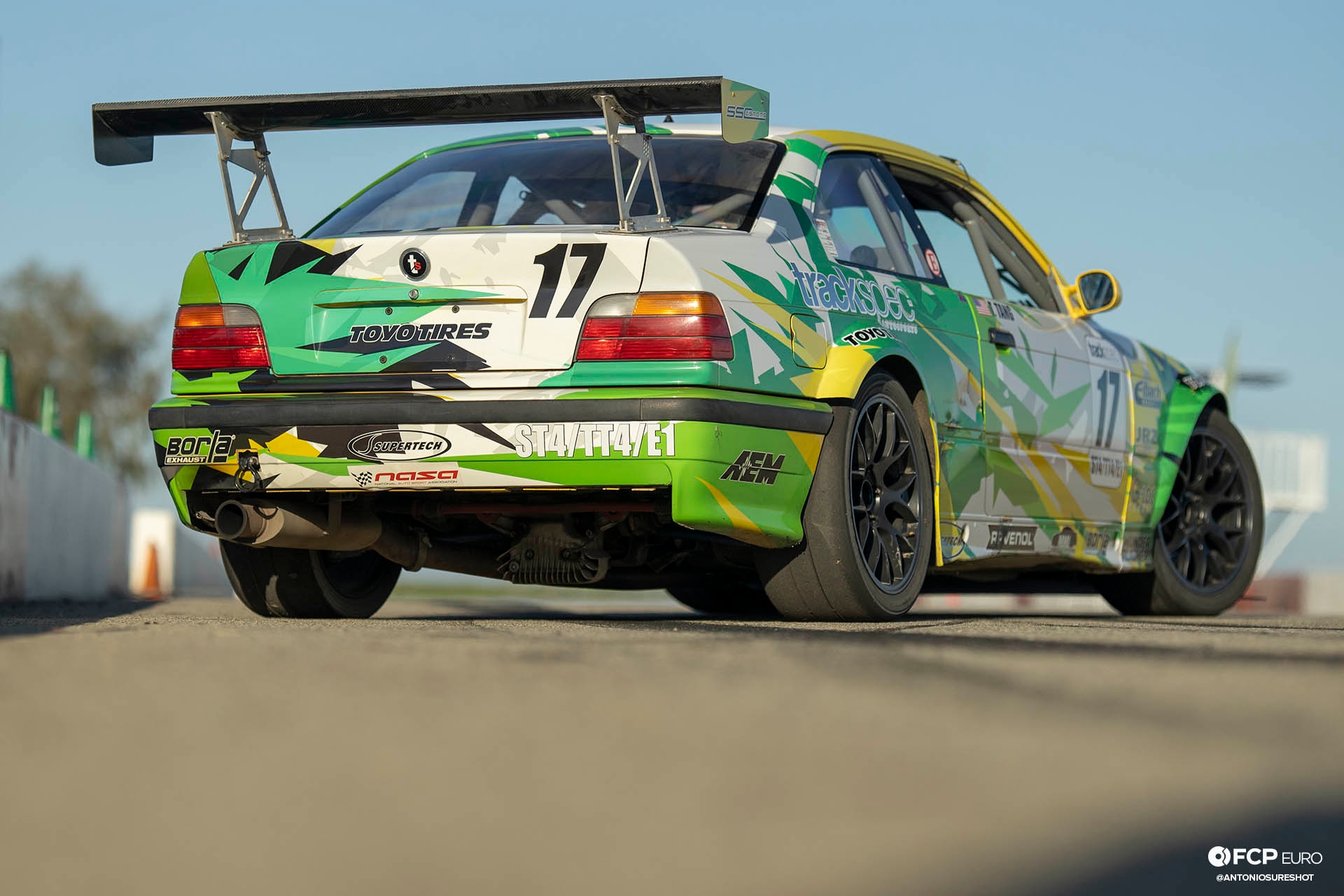
The rear fenders are OEM but with a set of added flares while the rear flares are made by TC Design. For ST4, the aerodynamic allowances are very simple. The bumpers are OEM with only a Trackspec Autosports four-inch race splitter on the front. The rear trunk has a functional Bimmerworld V2 GT Wing and that’s it. No other aero trickery or black magic voodoo here. The livery is laid by SS Customs and designed by Skepple.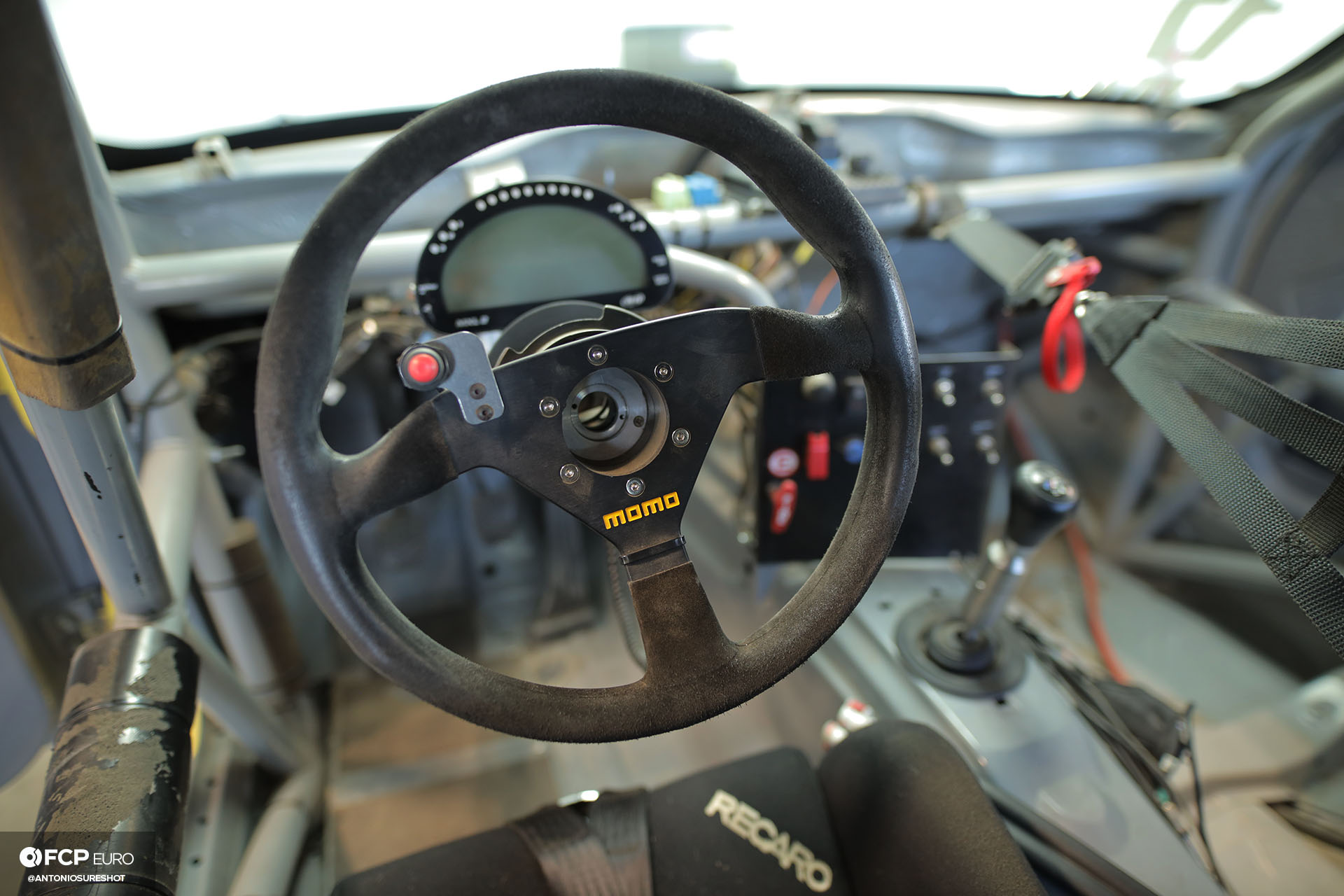
Being a race car, things are very, very simple and stripped away. Mostly for weight but also to improve driver focus. He or she doesn’t need to be distracted by anything while racing at 10/10ths. The steering wheel is a Momo Mod.78 attached to a quick disconnect on the stock steering column. The adjustability has been removed and it’s fixed to the cage with a set of aluminum spacers. The only addition to the wheel is a push button for Push to Talk (PTT) on his radio to communicate with his team while on track. An AIM MXL2 dash display gives Tom the data he needs, shift and warning lights and nothing else.
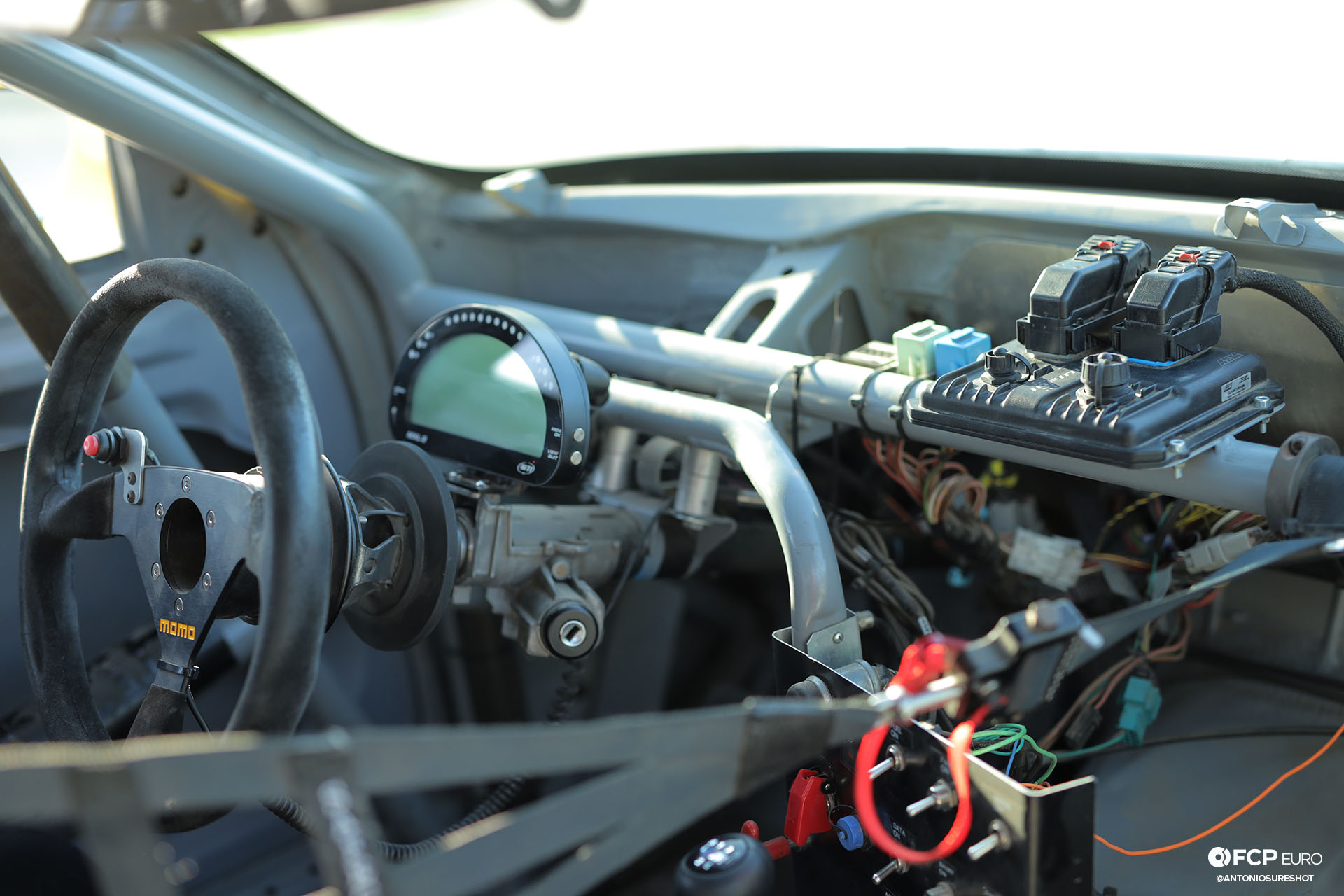
Controlling the engine and its systems is an AEM Infinity motorsports ECU. The AEM Infinity is essentially one of the most user-friendly motorsports engine controllers available today.
Much of the way it’s initially set up is done by pull down menus from the InfinityTuner program’s ECU Set Up Wizard. It can do this easily since it’s based off airflow modeling – better known as Volumetric Efficiency tuning – rather than mass air. It allows for quicker, real time tuning by the ECU as it bases all of its calculations on the engine displacement, number of cylinders, ignition type, and firing order.
Of course, you can’t do this with a processor that’s slower than a turtle in molasses. According to AEM’s marketing material, the Infinity ECU is the “fastest on the market” thanks to a 200MHz 32-bit main processor. If you’re a computer nerd, you’re probably thinking this isn’t very fast compared to something from Intel or AMD, but most ECUs run on 8- to 16-bit processors in the 20 to 100MHz range at best with additional processors for other outputs besides the fuel injection (like spark timing, knock control, or even turbo boost controlling). The Infinity uses only two: the 200MHz main to handle the entire engine and a second 20MHz, 16-bit processor for power management and expandability to future proof it.
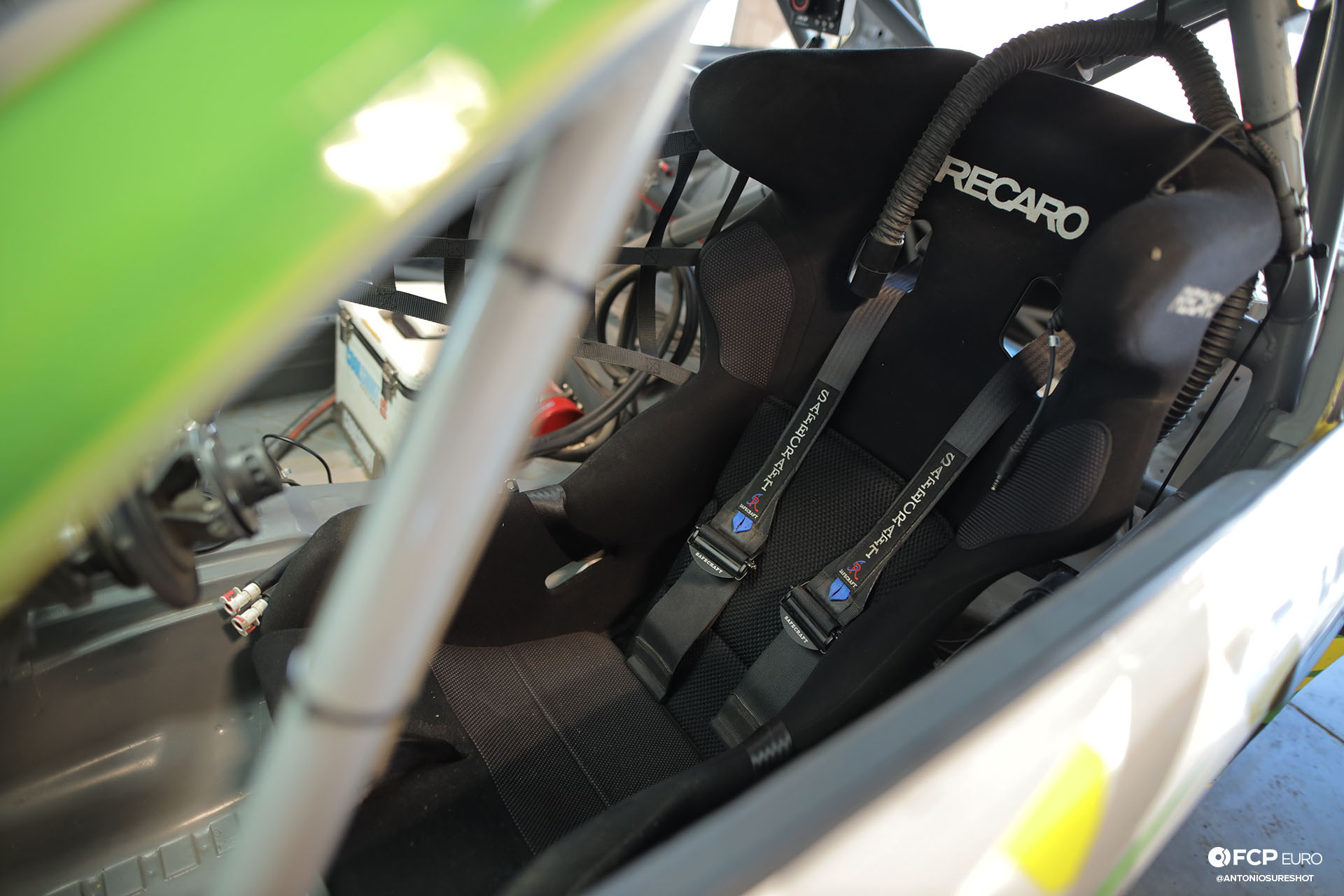
The cage is a FIA specification design that was installed by TC Design. This means it features the best roll and impact protection you can incorporate outside of a current NASCAR-style roll cage. Tom is held in with a Recaro SPG Pro Racer HANS with a SafeCraft Six-Point Harness. The shoulder straps narrow up to work with a HANS Device while past that point, it widens to a three-inch for maximum load spreading against the chest.
The SafeCraft Window Net helps prevent himself and race car parts from entering the cockpit. The SafeCraft Center Net, though, prevent his body from wrapping around the seat in the event of a crash. Despite being held in tightly by the belt system, your body still moves as the harnesses stretch to slow your momentum. When this happens, your body can still move from side to side – especially if hit at an angle – and your head and shoulders could be further injured by rolling around the seat as you move forward. The center net prevents that from happening and helps guide your body back into the seat during the ending of the impact.
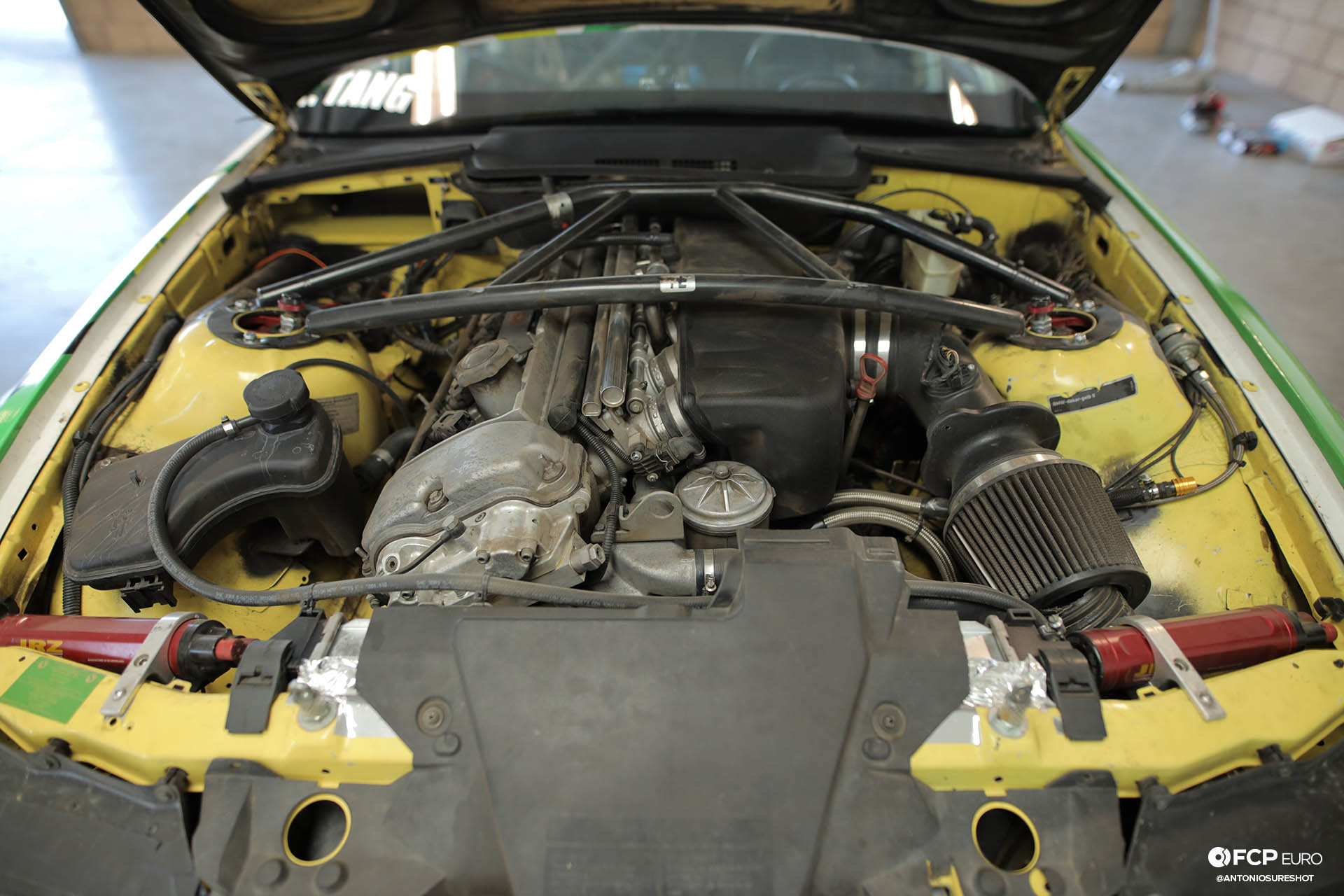
The AEM Infinity is controlling this: an S54 3.2-liter BMW I6 from an E46 M3. It produces up to 335-wheel horsepower and 265-ft-lbs of torque on a Dynojet dynamometer. However, when its in ST4 trim it produces 240-WHP and 250-torque to keep it in the 12:1 power to weight ratio with its 2830-pound race setup. So, the modifications are rather simple and, again, showing the inexpensive beauty and approachability of the class.
A set of Supertech Performance valves, springs and retainers are all that have been done internally, but it is fitted with an AFE Power intake system, a Bimmerworld exhaust manifold and a Borla exhaust system. All parts you can purchase from your favorite aftermarket BMW parts site. The ECU is tuned by Jei Chang over at Blacktrax Performance using only 91-octane fuel that Tom can get at the track or at his local gas station.
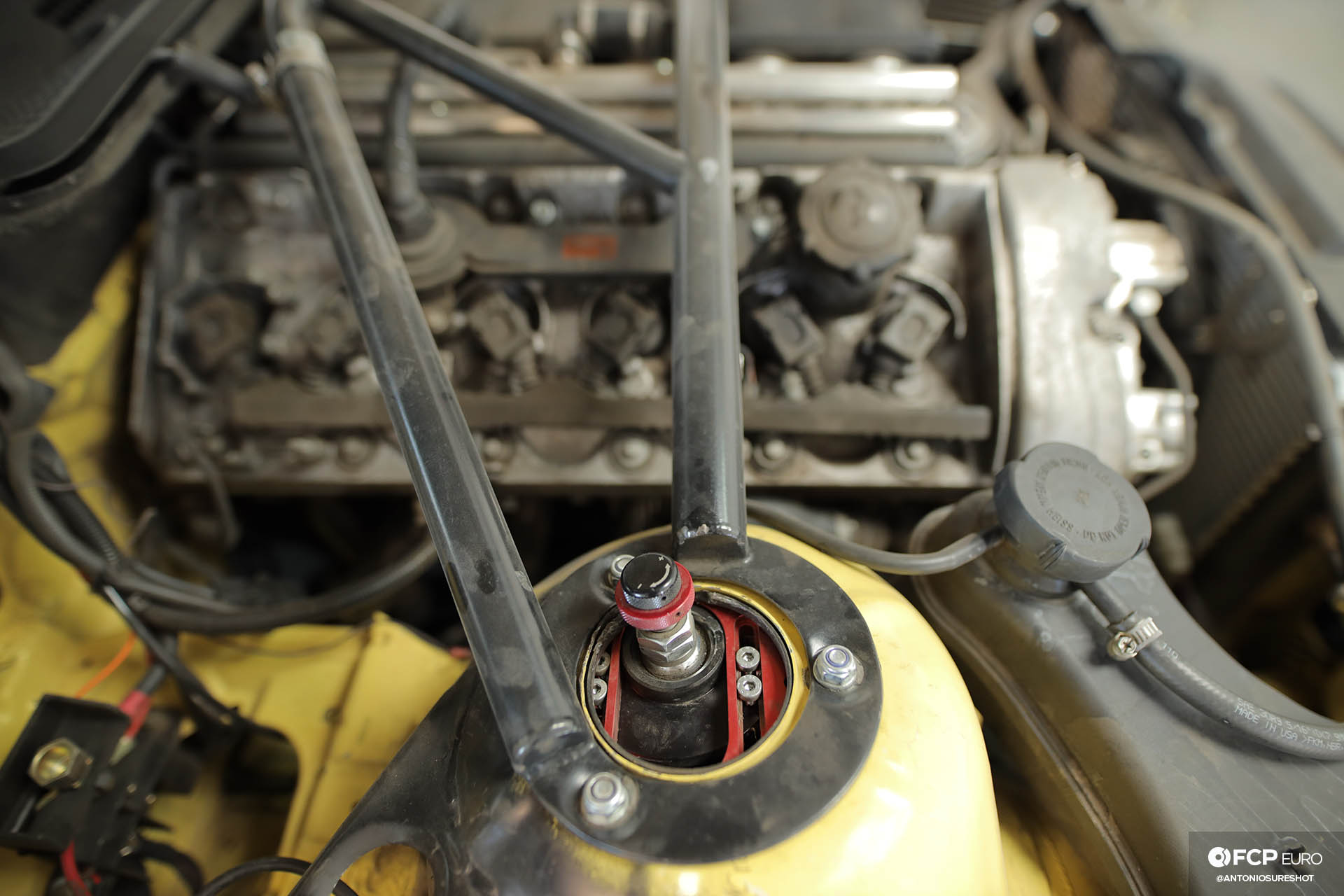
However, where you can go a little overboard with is the suspension. For Tom and this E36, it’s a set of JRZ 12 32 Motorsports Dampers. Inside are FA3030 pistons that feature screw in bleeders to make it a digressive, linear, or digressive/linear damper tune. The 50DA shafts that allow for 27 clicks of compression and 27 clicks of rebound tuning and further refining the feel of the damper. The front Eibach 950-lbs/inch springs sit on adjustable perches and JRZ strut mounts feature a large range of camber adjustment.
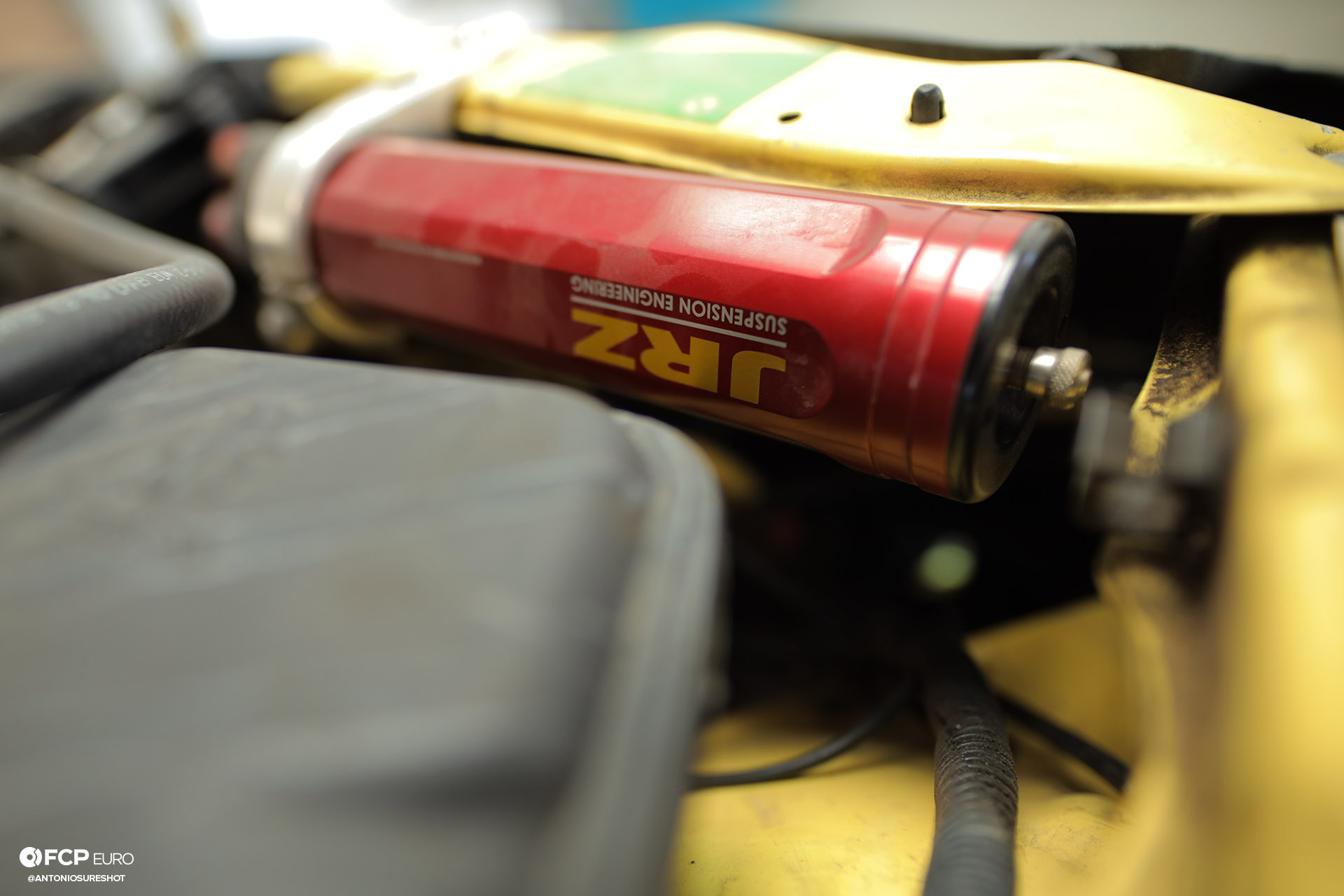
The front JRZ strut damper reservoirs sit just behind where the factory headlights used to reside. Since this car doesn’t see much night racing, the headlights were removed and replaced with a cover on the passenger side, and a duct on the driver side.
The JRZ reservoirs allow the oil to expand and contract as the piston travels through the damper body. Inside is a separator piston that keeps the oil and nitrogen gas from mixing, but still allows the gas to keep the pressure inside the body consistent to reduce aeration. As the piston moves, high- and low-pressure areas form on each side of the piston. The low-pressure side will not only degas the shock oil but also lower the boiling point of the oil and both conditions aerate the dampers.
The reservoirs can also add to the damping control since shock oil must flow through another valving set before entering or exiting the reservoir body. The advantage here is that you can set your initial damping feel on a shock dyno, further refine this feel during a testing day where you have a lot of time to remove tires and adjust on the damper bodies, and adjust at the track during a session using the reservoir adjustments.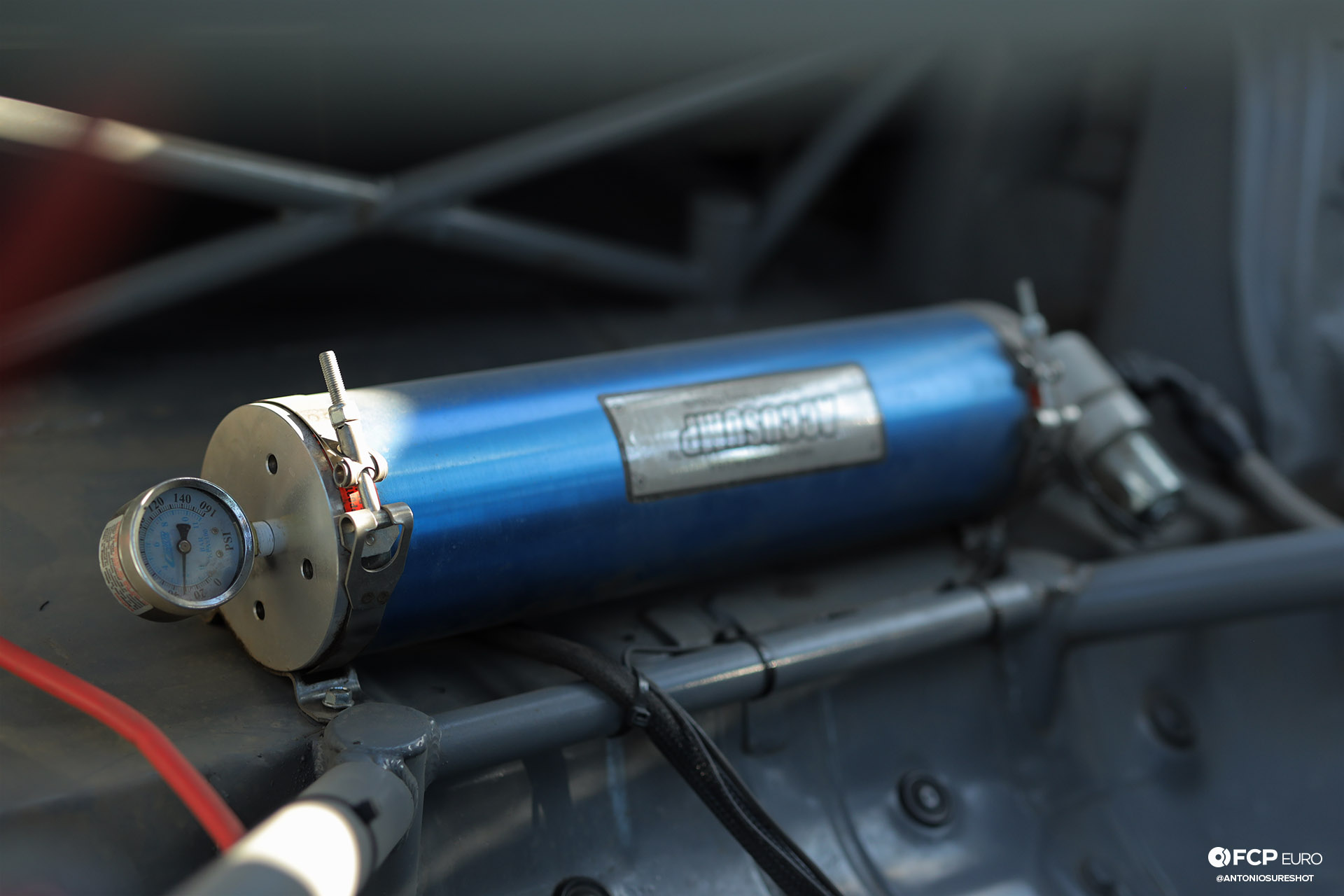
The Canton Oil Products Accusump Oil Accumulator has probably saved more engines than any other device besides the AEM Infinity’s ability to shut down an engine when it detects a major problem. The Accusump accumulates engine oil from the engine as it runs. It will retain this oil by closing a valve just before the engine is shut off and only send oil again when the valve is opened. This means that the engine can be pre-lubricated before start up by opening the valve before starting the engine. Not only that, but in the event of a low pressure event – like a high-G load corner where the oil sloshes away from the pickup – the Accusump can send pressurized oil to the engine until it reaccumulates oil pressure again. There are two types of valves: a manual and an electronic version and Tom is using the electronic version.
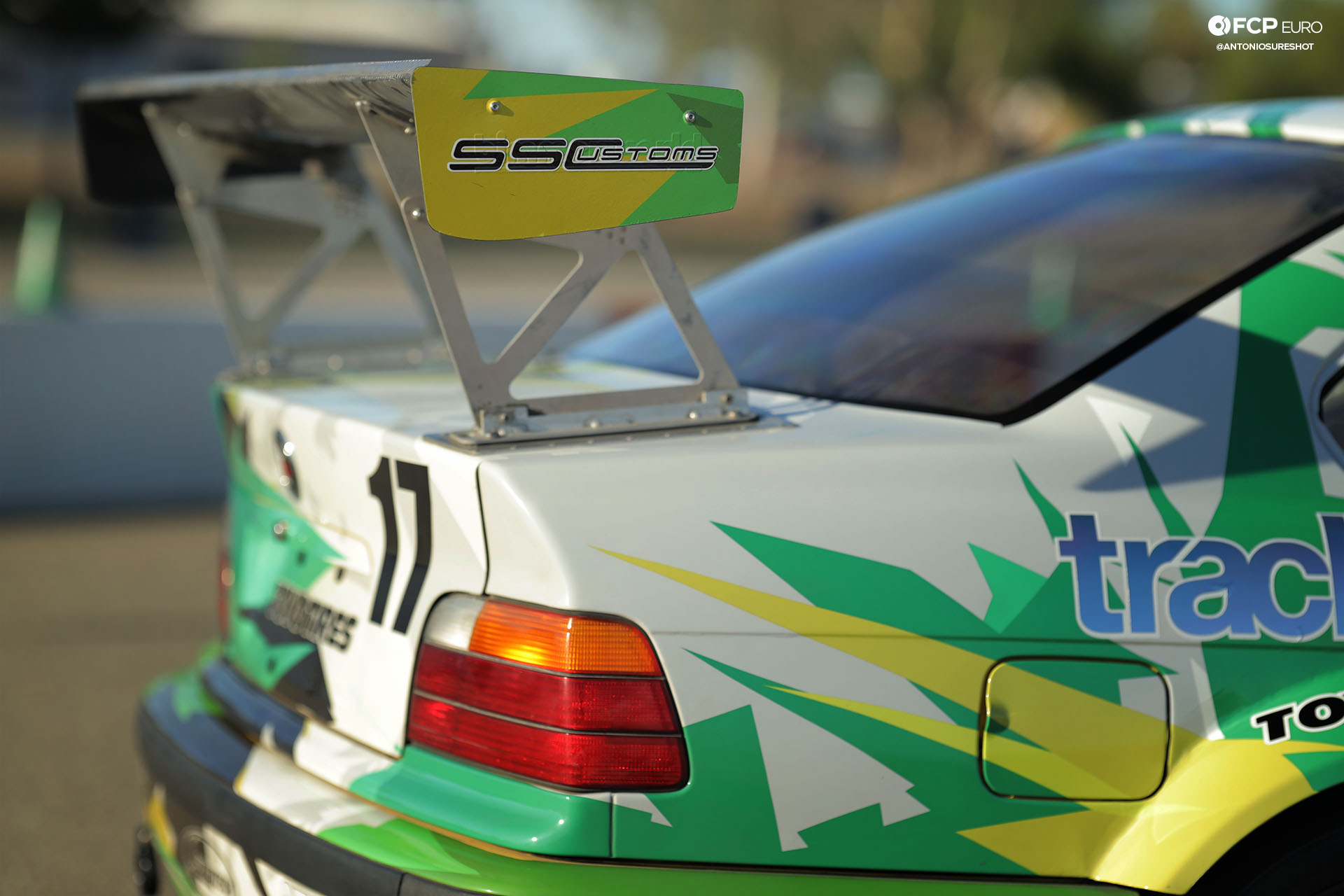
Despite its simple looks, the Bimmerworld V2 GT Wing is a fully functional device. It features multiple points of adjustments to change the wing’s angle of attack and downforce. Since it’s attached to the trunk and makes downforce (or negative lift for you aeronautic types), the sheet metal of the trunk has been reinforced to deal with the additional pressure. You know, because it really does something other than look racy.
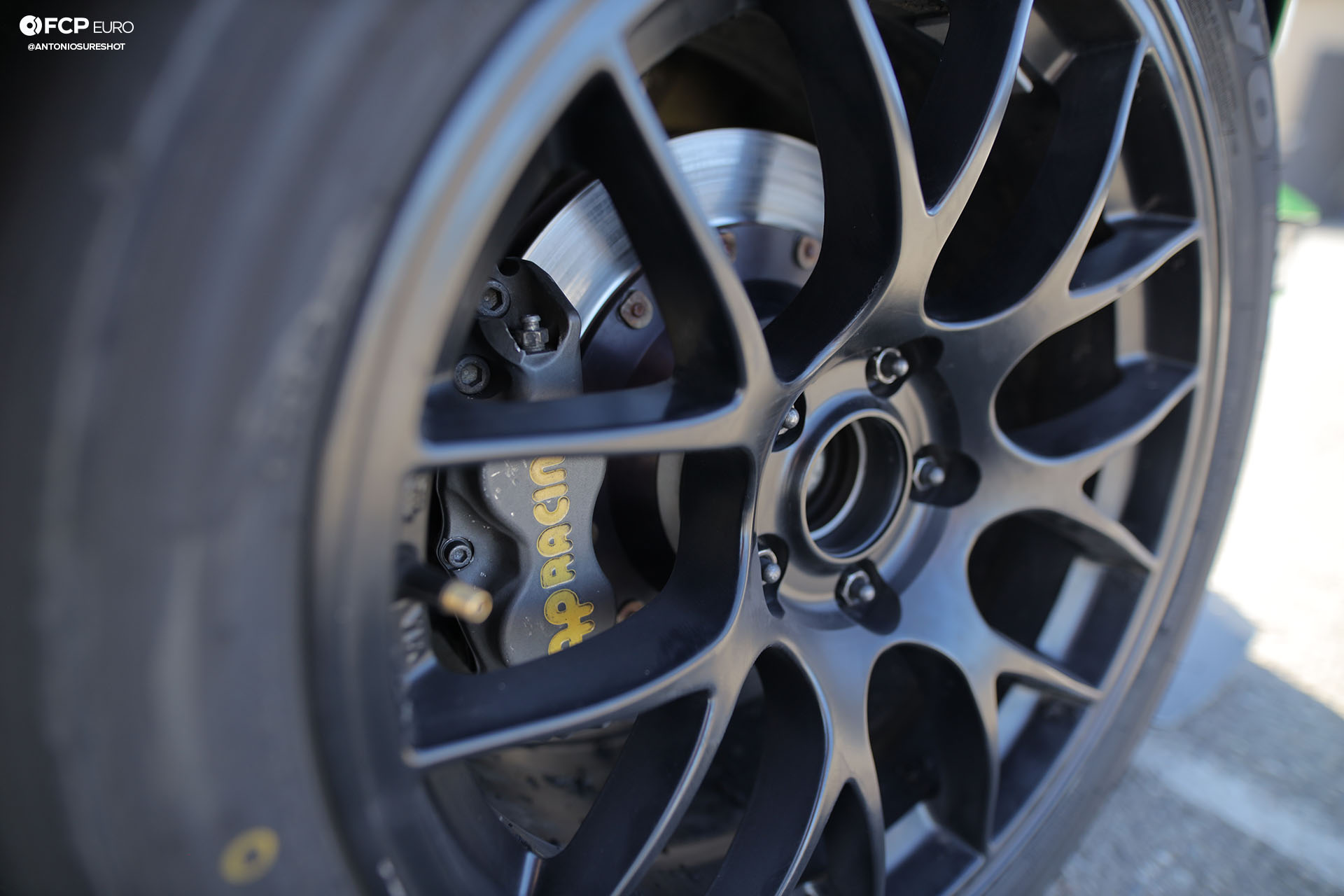
The only tightly-controlled rules in Super Touring ST4 revolves around the tires. They must be a specific size and must be Toyo Proxes RR tires. Tom’s M3 uses 275/35R18 all around on Apex EC-7 wheels in 18x9. The tires offer surprisingly long life for a race tire but also a lot of grip. This means the upgrade to a set of AP Racing CP8350 calipers with G-LOC R16 front and R12 rear compound pads will work and not just slide as they bite into the AP Racing 332mm two-piece rotors. In case they do, though, a Teves MK60 motorsports ABS system controls brake pressure at the limits of traction that Tom is comfortable with behind the wheel.
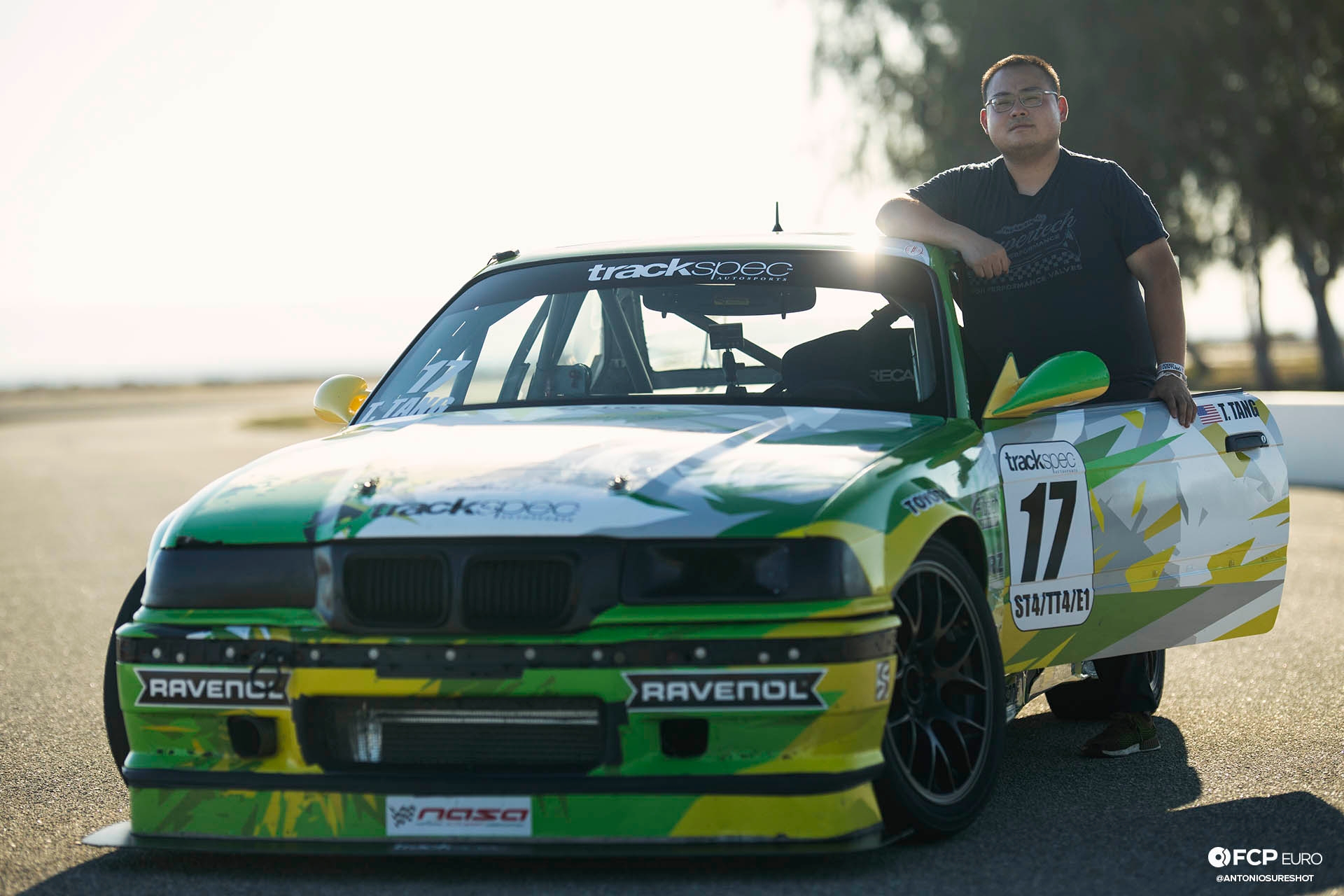
Even though the rules limit what you can do in NASA ST4, Tom still tries to make all his cars stand out on track. “I’ve always tried to set my car apart through the livery,” he explained the looks of his own car. “Every livery design that I’ve raced with has had special meaning to me. With this E36, that was no exception. The reason I went with a green and yellow splinter camouflage design is because it pays homage to my S2000, which was green for many years.”
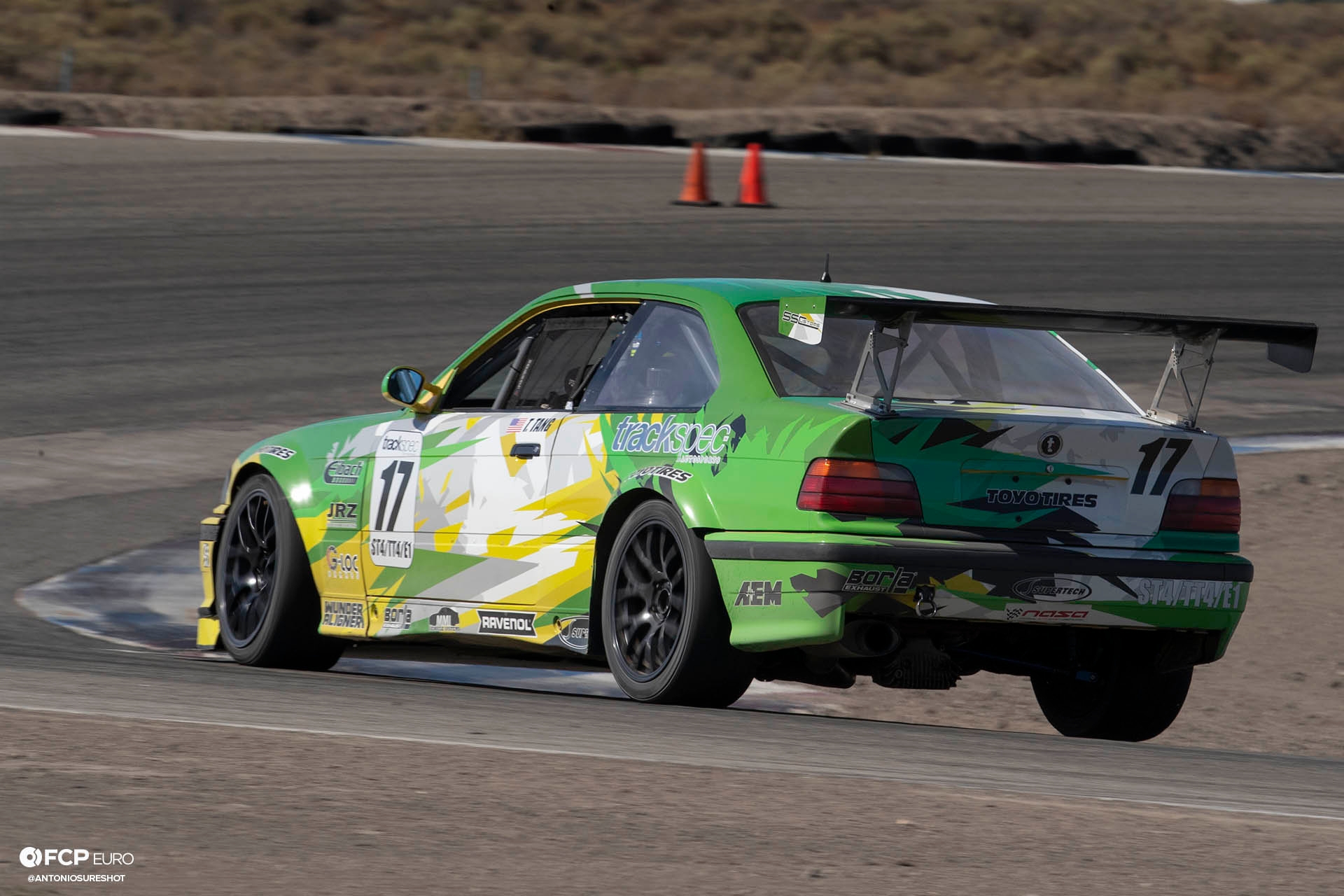
So far, the best time set in this car has been a 1:47.4 at the track that took away his original S2000: Sonoma Raceway’s Sports Car Course. Says Tom, “The car has been immediately competitive, and was formerly an ST3 champion, which is awesome. It has been detuned for ST4, and we are still doing a lot of testing and refining of the overall setup, but the car has already been on the podium this season (2019). We are excited to continue to push for this year’s championship. Right now, we are sitting 4th overall out of 26 competitors (as of time of writing, July 2019).”
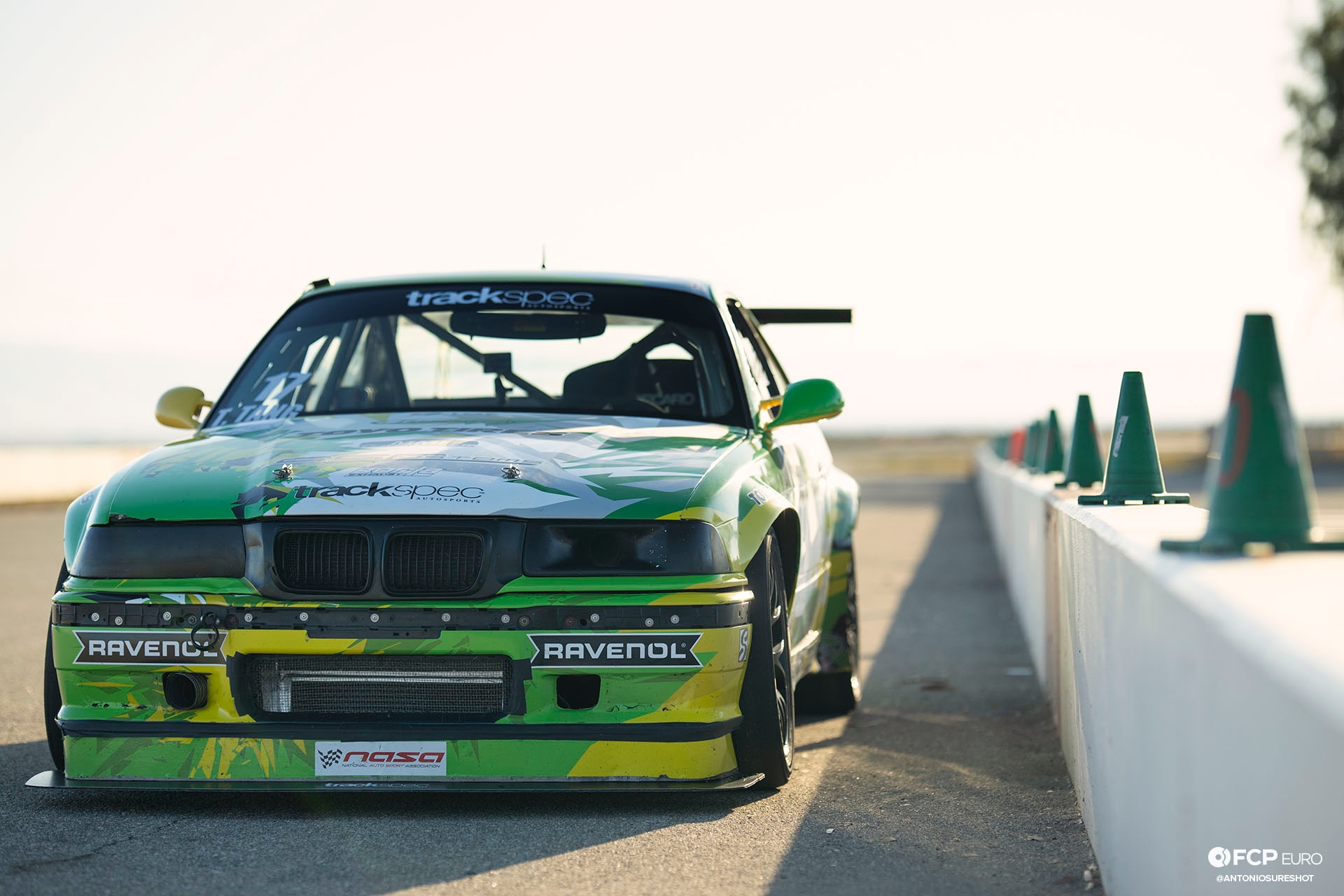
While the car is a wheel-to-wheel competitor limited to ST4 rules, it doesn’t mean it won’t see other types of racing. He has plans to also run in Endurance races with NASA in the E1 class at the 4 Hours of Sonoma and the legendary 25 Hours of Thunderhill. “I also plan to do time attack just for fun,” Tom says, “since that’s where I started and it’s nice to enjoy the car unrestricted with full power on occasion.”
When it comes to street cars, the mantra of “built not bought” is always championed. In racing, sanity rules and buying something already made and adjusting it to your style of driving is the way of life. “After building my own race cars over the years I’ve learned that it’s cheaper and faster to buy a proven race car than build one,” Tom smiled, “It’s like the opposite of a street car, you know, that saying that goes: ‘built, not bought?’ That does NOT apply to race cars. Trust me.” It's hard to argue against a guy sitting at the top five of the points standings in a used race car.
Story by Justin Banner
Photos by Antonio Alvendia
If you like this BMW E36 M3, you can find additional BMW content at bmw.fcpeuro.com, as well as more build features like this one here. If there's anything specific you would like to see, or if you have any questions/comments, leave them in the comments section below.











